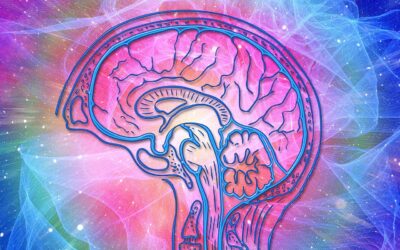Key AI Terminology Every Business Leader Should Know

AI is quickly changing business, offering new ways to innovate, improve efficiency, and grow. However, AI’s complexity can overwhelm business leaders without technical backgrounds. Knowing key AI terms is crucial for making smart choices and using AI well in an organization. This article explains essential AI terms for business leaders, giving clear definitions and background to help understand this fast-changing field.
AI Terms Overview
AI terms often seem like a new language, full of technical jargon. Business leaders need to grasp these terms to talk effectively with tech teams and plan AI projects. This guide explains the most important AI terms and ideas to build a strong foundation.
Artificial Intelligence (AI)
AI means creating machines, especially computer systems, that can do tasks requiring human-like thinking. These tasks include learning, reasoning, solving problems, understanding surroundings, and processing language. AI aims to build systems that can do jobs needing human intelligence, enhancing human abilities.
Machine Learning (ML)
ML is part of AI that creates algorithms allowing computers to learn from data and make predictions or decisions. Unlike regular programming with set instructions, ML systems find patterns in data and get better as they see more data.
Supervised Learning
Supervised Learning is when an algorithm trains on labeled data. Each training example has an output label, and the algorithm learns to connect inputs to correct outputs. This method works for tasks like sorting things into categories and predicting numbers.
Unsupervised Learning
Unsupervised Learning trains an algorithm on data without labels. The system tries to find the data’s structure, spotting patterns and connections. This approach helps group similar things and find associations.
Reinforcement Learning
Reinforcement Learning is when a system learns to make choices by trying actions in an environment to get the best reward. This trial-and-error method works in areas like robotics, games, and self-operating systems.
Deep Learning (DL)
DL is a type of machine learning using artificial neural networks with many layers. These networks, inspired by the brain, can learn complex patterns from lots of data. DL drives many recent AI advances, like recognizing images and speech.
Neural Networks
Neural Networks are algorithms that try to find underlying relationships in data by working like the human brain. They have layers of nodes, or neurons, where each layer changes the input data in a process called forward propagation.
Convolutional Neural Networks (CNNs)
CNNs are deep neural networks mainly used for processing structured grid data, like images. CNNs use special layers to automatically learn features from input data at different levels.
Recurrent Neural Networks (RNNs)
RNNs are neural networks good at predicting sequences. They have connections that loop back, letting them remember past inputs. RNNs often work on tasks like modeling language and predicting time-based data.
Natural Language Processing (NLP)
NLP is an AI field focusing on how computers and humans interact using natural language. NLP lets machines understand, interpret, and create human language, enabling things like chatbots, language translation, and analyzing text sentiment.
Sentiment Analysis
Sentiment Analysis is an NLP technique that figures out the emotional tone in text. It analyzes text data to identify and categorize opinions as positive, negative, or neutral.
Tokenization
Tokenization breaks down text into individual words, phrases, symbols, or other meaningful parts called tokens. This basic step in many NLP tasks allows detailed text analysis.
Computer Vision
Computer Vision lets computers interpret and make decisions based on visual information from the world. This includes tasks like recognizing images, detecting objects, and identifying faces.
Image Recognition
Image Recognition involves identifying objects, people, places, and actions in images. This technology has many uses, from tagging social media photos to helping self-driving cars.
Object Detection
Object Detection finds and locates objects in images or videos. This technique goes beyond recognizing images by classifying objects and determining where they are.
Robotic Process Automation (RPA)
RPA uses software robots to automate repetitive, routine tasks that usually need human input. RPA can greatly increase efficiency and reduce mistakes in business processes.
Predictive Analytics
Predictive Analytics uses statistical techniques, machine learning, and data mining to analyze past data and predict future events. This helps businesses make data-driven decisions and anticipate trends.
Big Data
Big Data means large datasets that regular data processing methods can’t handle. Big Data technologies and techniques, like Hadoop and Spark, store, process, and analyze these huge amounts of data to uncover patterns and insights.
Internet of Things (IoT)
IoT is the network of physical objects with sensors, software, and other technologies that connect and share data with other devices and systems over the internet. IoT enables real-time data collection and analysis, leading to smarter business decisions.
Edge Computing
Edge Computing processes data closer to where it’s generated, instead of relying on a central data-processing warehouse. This reduces delays and bandwidth use, making it ideal for real-time applications and IoT devices.
Blockchain
Blockchain is a decentralized, distributed ledger technology that records transactions across many computers. It’s the foundation of cryptocurrencies like Bitcoin and could be used in supply chain management, finance, and more.
Artificial General Intelligence (AGI)
AGI refers to AI that can understand, learn, and apply knowledge across many tasks at a level similar to human intelligence. AGI is still theoretical, with ongoing research trying to achieve it.
Artificial Super Intelligence (ASI)
ASI is a hypothetical form of AI that surpasses human intelligence in all ways, including creativity, problem-solving, and emotional intelligence. ASI represents the highest level of AI development and raises significant ethical and existential questions.
Ethical AI
Ethical AI means developing and using AI that follows ethical principles, such as fairness, accountability, transparency, and privacy. Ensuring ethical AI is crucial for building trust and avoiding unintended consequences.
Explainable AI (XAI)
XAI refers to methods and techniques that make AI systems’ decision-making processes clear and understandable to humans. XAI is essential for ensuring accountability and trust in AI systems.
AI Governance
AI Governance includes the policies, procedures, and frameworks used to oversee the development and use of AI technologies. Effective AI governance ensures that AI systems are used responsibly and ethically.
Understanding key AI terms is essential for business leaders to manage artificial intelligence effectively. By learning these terms, leaders can make informed decisions, communicate better with tech teams, and implement AI projects strategically. As AI continues to advance, staying updated on the latest developments and terms will be crucial for using its full potential.









